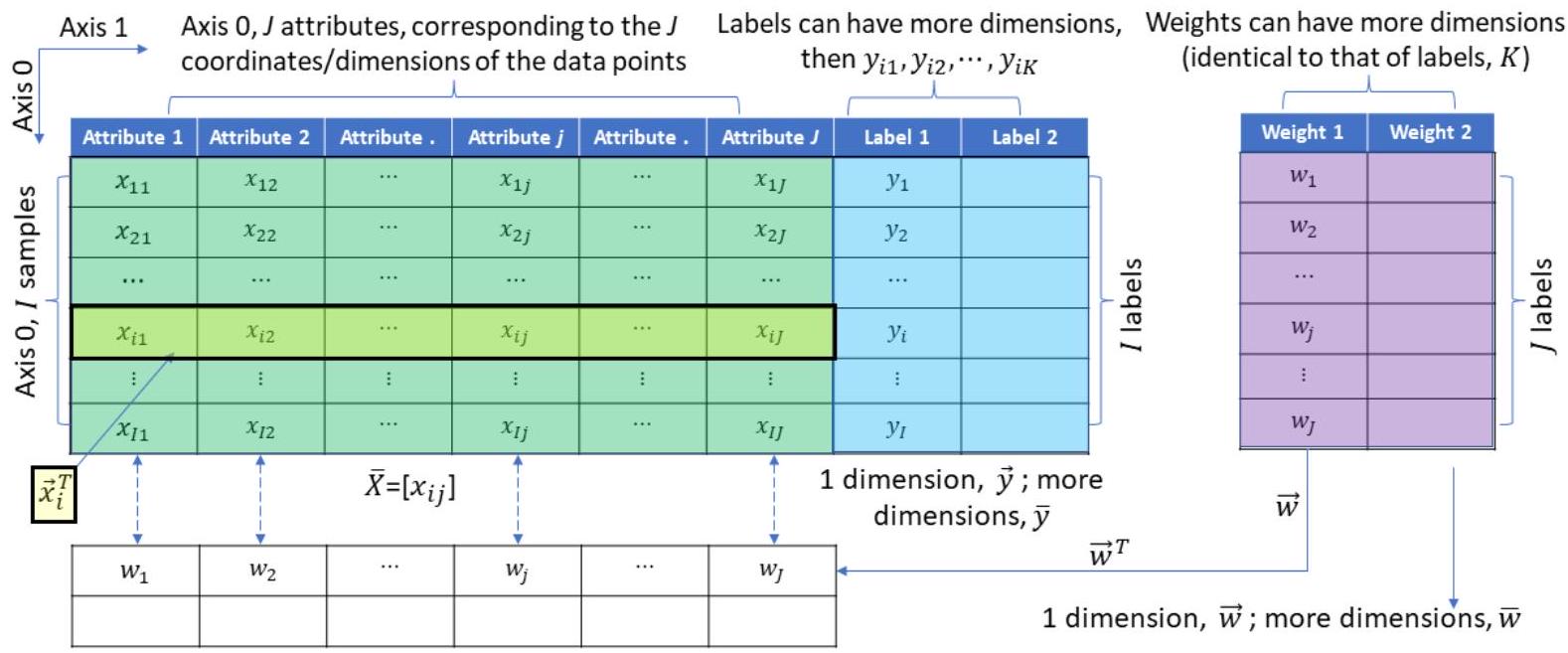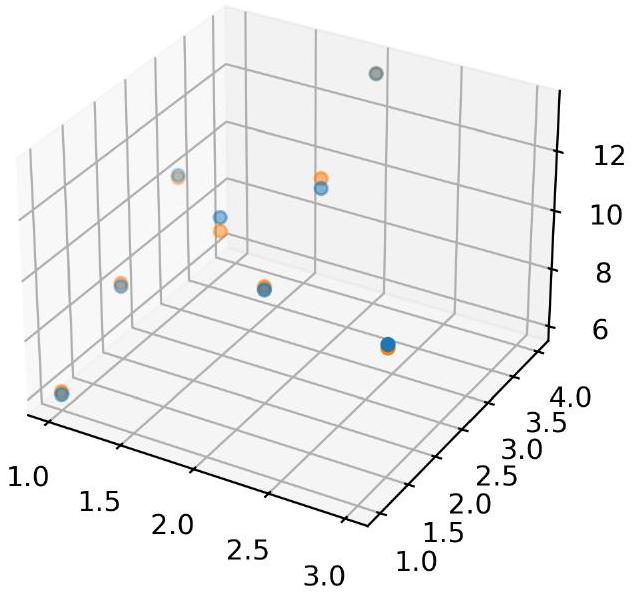Linear Models


import numpy as np
import matplotlib.pyplot as plt
from mpl_toolkits import mplot3d
# Create data
X_list = [[1.,1.],[1.,2.],[2.,2.],[2.,3.],[1.5,2.5],[2.,4.],[1.,3.],[3.,1.5]] # Create unlabeled
data point/instance using a Python list
X = np.array(X_list) # Turn instance into a NumPy array
Proj = np.array([1,2]) # Create perfect labels
y = np.dot(X,Proj)+3 # Add intercept
y = y + np.random.rand(y.size) # Add noise to mimic experimental measurements
# Define a function to perform analytical solution to linear model problems
def LinearRegression(X,y):
X_bar = np.hstack((X,np.ones([X.shape[0],1]))) # I = 8 by J+1 = 3
W_hat = np.linalg.inv(X_bar.T @ X_bar) @ X_bar.T @ y # J+1 = 3 by 1
return W_hat, X_bar
# Symbols are the same as those in the textbook
W_hat, X_bar= LinearRegression(X,y)
W = W_hat [:-2]
b = W_hat[-2:]
# Solution
Y_fit = np.dot(X_bar,W_hat)
# Plot and compare results
fig = plt.figure()
ax = plt.axes(projection='3d')
ax.scatter(X[:,0],X[:, 1],y,'b*')
ax.scatter(X[:,0],X[:,1],Y_fit,'rd')
